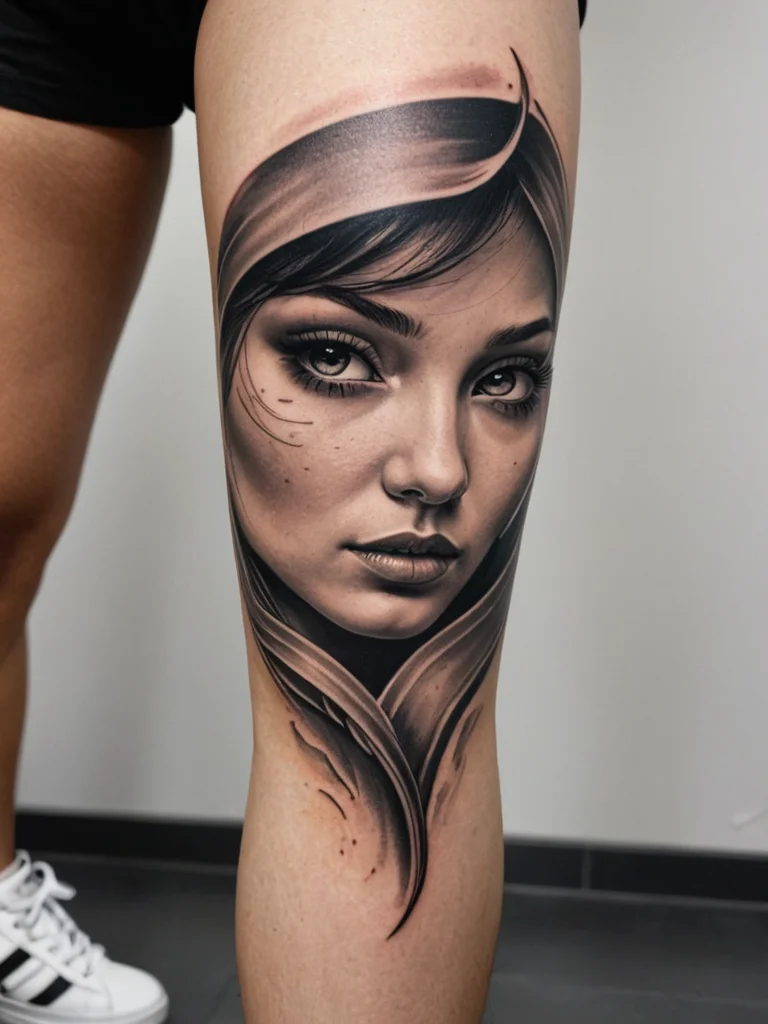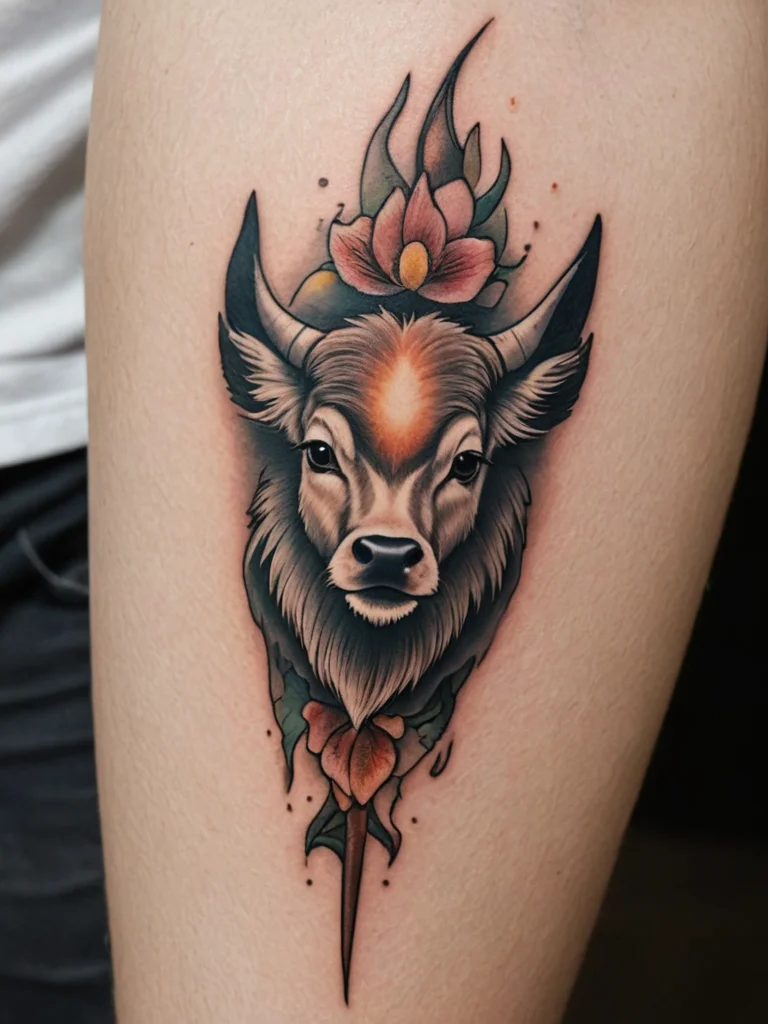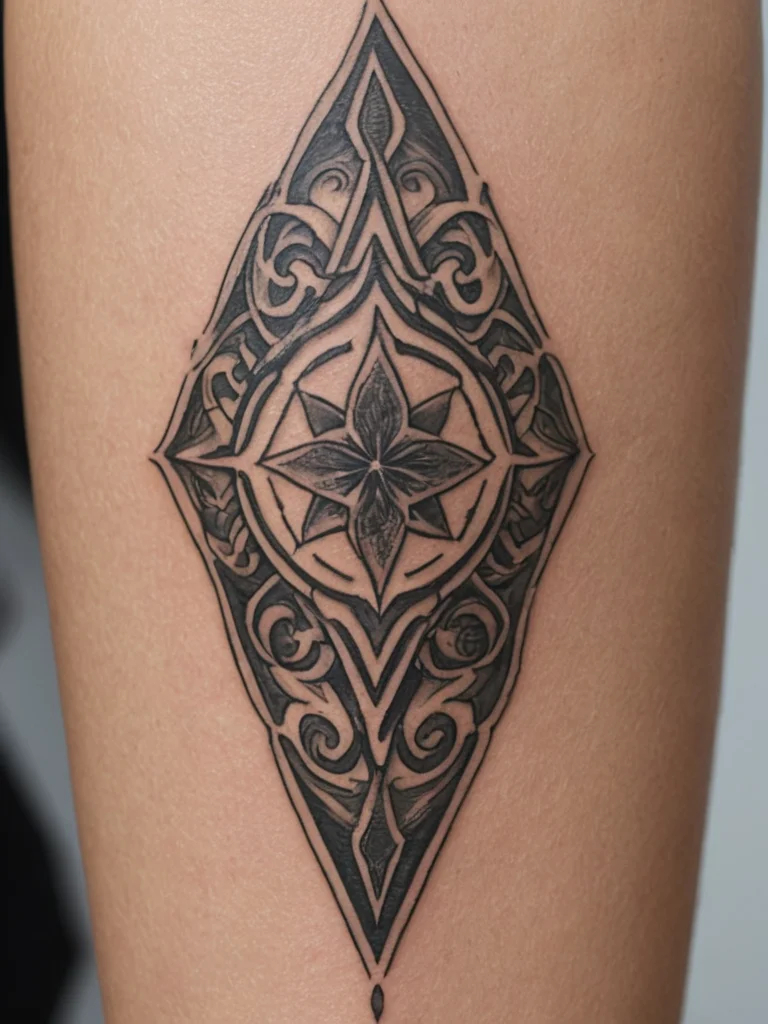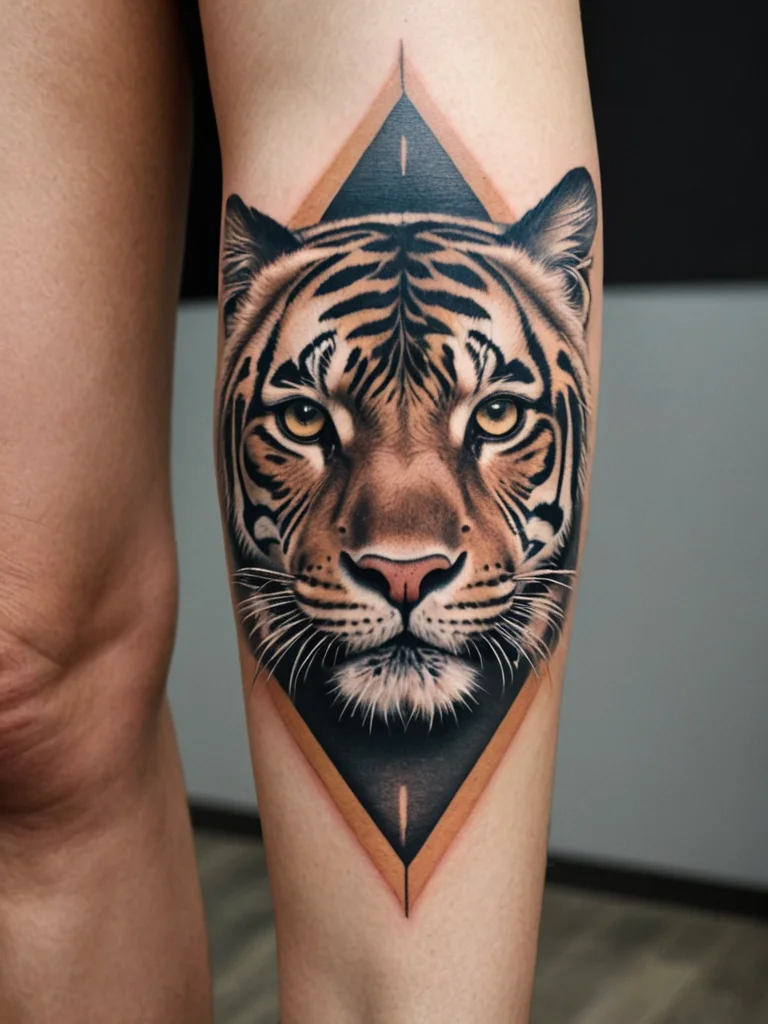Embarking on the journey of acquiring a new tattoo is an exciting venture, a permanent declaration of art on your skin. While the allure of a beautifully inked design on the shin or calf is undeniable, the healing process for these specific areas presents a unique set of challenges that demand meticulous attention and specialized care. Unlike the flatter, less mobile canvases of the arm or back, your lower legs are constantly in motion, subjected to the relentless forces of gravity, and often confined within clothing and footwear. These factors combine to create an environment where proper aftercare is not just advisable, but absolutely critical for ensuring your new masterpiece heals flawlessly and retains its vibrant integrity for years to come.
The skin on the shin and calf, particularly around the ankle and knee joints, is thinner and more susceptible to friction and stretching. Every step you take, every bend of your knee or flex of your ankle, places stress on the delicate, newly tattooed skin. This continuous movement can impede the formation of a healthy scab, disrupt the delicate healing layers, and even lead to premature ink loss if not managed with extreme diligence. Furthermore, the lower extremities are more prone to swelling due to gravity’s persistent pull, which can significantly impact comfort and potentially prolong the healing timeline. Understanding these inherent anatomical and physiological considerations is the first step in mastering the art of shin and calf tattoo aftercare, setting the stage for a successful and satisfying healing experience.
Many individuals underestimate the unique demands placed upon tattoos in these areas, often applying the same generalized aftercare instructions they might use for an arm or shoulder piece. However, a ‘one-size-fits-all’ approach simply will not suffice here. Tattoo artists, with years of experience observing healing patterns across countless body parts, consistently emphasize that the lower leg regions require a heightened level of awareness and a more disciplined approach to aftercare. The investment you make in your tattoo extends far beyond the initial cost and pain; it encompasses the dedication you commit to its healing. By adopting a proactive and informed aftercare regimen tailored specifically to the nuances of the shin and calf, you are not just ensuring a quicker recovery, but actively safeguarding the artistic longevity and visual quality of your new body art.
The specific hurdles: Why your shin/calf tattoo heals differently

The distinction in healing between a tattoo on your shin or calf compared to other body parts is not merely anecdotal; it is rooted in fundamental physiological and environmental factors. Your lower legs are anatomical workhorses, constantly engaged in movement and bearing the weight of your body throughout the day. This perpetual activity introduces significant challenges to the delicate healing process, making these areas particularly susceptible to complications if proper precautions are not observed. Understanding these specific hurdles is paramount for successful aftercare, allowing you to anticipate potential issues and implement preventative strategies.
One of the most prominent challenges is the sheer amount of movement your shin and calf endure. Every step, every shift in weight, every time you stand up or sit down, the skin stretches and flexes over muscle and bone. This constant motion can lead to a phenomenon known as ‘scab tearing’ or ‘cracking’. When a fresh tattoo begins to form a protective scab, this layer is relatively fragile. If the skin beneath it is frequently stretched or creased, the scab can tear prematurely, exposing the raw wound underneath. This not only increases the risk of infection but can also pull out pigment, leading to patchy areas, faded lines, or a ‘blown out’ appearance where the ink spreads beneath the skin, creating a blurry effect. The constant friction from clothing, especially tighter jeans, socks, or even bedsheets, can exacerbate this issue, rubbing away scabs and causing irritation.
Another critical factor is blood circulation. While the body is a complex network of arteries and veins, blood flow tends to be less robust in the extremities, particularly the lower legs, compared to the torso or head. Gravity works against the efficient return of blood and lymphatic fluid from the feet and lower legs back to the heart. This can lead to slower delivery of essential nutrients and oxygen to the healing tattoo, potentially extending the recovery period. Moreover, reduced circulation can impede the body’s natural inflammatory response, which is crucial for fighting off potential pathogens and initiating tissue repair. This slightly diminished circulatory efficiency means your body might take a little longer to transport the necessary cellular components to effectively heal the tattooed area, requiring more patience and consistent care from you.
Swelling is an almost inevitable companion to new tattoos on the shin or calf. Due to gravity, fluid naturally accumulates in the lower legs when you are standing or sitting for extended periods. This pooling of interstitial fluid can cause significant discomfort, make movement more difficult, and put additional pressure on the healing skin. While some swelling is a normal part of the inflammatory response, excessive or prolonged swelling can hinder healing by reducing local circulation and stretching the skin uncomfortably. Tattoo artists often recommend elevating your leg when resting to combat this gravitational effect, a simple yet highly effective strategy to mitigate swelling and promote better fluid drainage from the tattooed area.
Furthermore, the shin and calf are often more exposed to environmental elements and potential contaminants. Whether it’s dust from the ground, pet dander, or the inevitable contact with furniture, car seats, or public transport, your lower legs are at a higher risk of encountering bacteria and irritants. Shoes and socks, while necessary, can also create a warm, moist environment – an ideal breeding ground for bacteria – and exert constant pressure or friction on the new tattoo. This necessitates careful consideration of footwear, opting for loose-fitting options that minimize contact with the tattooed area. The unique combination of constant movement, gravitational challenges to circulation and swelling, and increased environmental exposure makes healing a tattoo on your shin or calf a distinct and demanding process that requires a truly dedicated approach to aftercare.
From artist to aftercare: Your day-by-day guide for the first week

The first week following your tattoo appointment is the most critical phase of the healing process, especially for a tattoo located on the shin or calf. This period lays the foundation for how well your tattoo will heal and how vibrantly it will age. Think of your new tattoo as an open wound, and treat it with the utmost care, akin to a delicate surgical dressing. Your commitment to a rigorous daily routine during this initial phase will significantly impact the final appearance and longevity of your body art. What you do in these first seven days will set the tone for the entire healing journey.
Day 0: The immediate aftermath and initial protection
Immediately after your tattoo is complete, your artist will apply a protective covering. This could be a traditional cling film wrap or a specialized breathable, adhesive bandage like Saniderm or Tegaderm. If your artist used cling film, they will usually advise you to remove it within 2-4 hours. This initial wrap protects the fresh wound from environmental contaminants and absorbs initial seepage of plasma and excess ink. Once removed, gently wash the tattoo with lukewarm water and a mild, fragrance-free, antibacterial soap. Pat it completely dry with a clean paper towel – never use a cloth towel, as it can harbor bacteria and lint. Apply a very thin layer of artist-recommended aftercare ointment, just enough to make the tattoo slightly shiny, but not greasy. Do not re-wrap with cling film unless specifically instructed by your artist, as this can suffocate the tattoo and trap bacteria. If a breathable bandage (Saniderm/Tegaderm) was applied, follow your artist’s specific instructions, which usually involve leaving it on for several days, typically 3-5, before removal and subsequent washing.
Days 1-3: Gentle cleansing and meticulous moisturizing
For the next few days, your primary focus should be on consistent cleanliness and optimal hydration. You should gently wash your tattoo 2-3 times a day using the same mild, fragrance-free antibacterial soap. Ensure your hands are thoroughly clean before touching the tattoo. Lather the soap in your hands and gently cleanse the tattoo using light, circular motions. Rinse thoroughly with lukewarm water, allowing the water to run over the tattoo rather than directly jetting it. After washing, always pat the tattoo completely dry with a fresh paper towel. Avoid rubbing at all costs, as this can irritate the fragile skin and potentially pull off forming scabs. Once dry, apply a very thin layer of your chosen aftercare lotion or balm. The key here is ‘thin’ – too much product can suffocate the tattoo, trap moisture, and potentially lead to breakouts or infection. The tattoo should be able to breathe. During these days, you might observe a clear or slightly colored fluid (plasma and ink) seeping from the tattoo; this is normal. The tattoo will also appear red, swollen, and feel warm to the touch. Keep your leg elevated as much as possible, especially when resting, to minimize swelling, which is particularly common for lower leg tattoos due to gravity.
Days 4-7: The peeling phase begins and itch management
By day 4, you will likely notice the tattoo starting to dry out, and the top layer of dead skin, along with excess ink, will begin to peel or flake off. This phase is often compared to a sunburn peeling. It is absolutely crucial that you resist the urge to pick, scratch, or peel the flaking skin. Allow it to come off naturally during your washing routine or as you moisturize. Picking at scabs or peeling skin can pull out ink, create patchy spots, and significantly increase the risk of scarring or infection. Continue your washing and moisturizing routine diligently, 2-3 times a day. As the peeling intensifies, you might experience significant itching. To alleviate this, gently pat the area or apply a cold compress over your clothing; never scratch directly on the tattoo. During showers, avoid direct, forceful water spray on the tattoo and keep shower times brief. Opt for loose-fitting, breathable clothing, such as cotton shorts or baggy sweatpants, to minimize friction. Avoid tight socks or shoes that press against the tattoo. Continue to elevate your leg whenever you are sitting or lying down to help manage any residual swelling. By the end of the first week, most of the peeling should be complete, and the tattoo will look duller, often referred to as ‘milky’ or ‘cloudy’ – this is a normal part of the healing process as the new layer of skin forms over the pigment. Consistency and patience are your greatest allies during this foundational week.
Sustaining your ink: Weeks 2-4 and preventing common healing issues

As you transition from the intense initial week into weeks 2-4, your tattoo will still be actively healing beneath the surface, even if the visible peeling has largely subsided. This period is crucial for the complete regeneration of skin layers and the permanent setting of the ink. While the urgent, day-to-day focus of the first week eases, a consistent and mindful approach to aftercare remains paramount. This phase is about consolidation, protection, and preventing common issues that can compromise the long-term integrity and appearance of your tattoo.
Continued moisturization and sun protection: Your daily rituals
The skin on your shin and calf, particularly after being subjected to the tattooing process, will continue to be dry and delicate for several weeks. Therefore, consistent moisturization remains a cornerstone of your aftercare routine. Continue to apply a thin layer of a fragrance-free, non-comedogenic lotion 2-3 times a day, or whenever the tattoo feels dry or tight. This helps to keep the new skin supple, reduces itching, and promotes healthy cell regeneration. However, remember the golden rule: less is more. Over-moisturizing can clog pores, trap bacteria, and even cause heat rash, potentially delaying healing. The skin should feel hydrated, not greasy or suffocated. Simultaneously, sun protection becomes your unwavering ally. Direct sun exposure is the arch-nemesis of new and even fully healed tattoos. UV rays break down tattoo pigments, causing them to fade, blur, and even lead to severe sunburn on the compromised skin, which can cause blistering and permanent damage. For the first 4-6 weeks, it is strongly advised to keep the tattoo completely covered when outdoors. After this period, and indefinitely for the life of your tattoo, apply a high-SPF (30+) broad-spectrum sunscreen liberally whenever the tattoo is exposed to the sun. This preventative measure is critical for preserving the vibrancy and crispness of your tattoo.
Addressing persistent itching and managing activities
Itching often persists into weeks 2-4 as the deeper layers of skin continue to heal and regenerate. This can be one of the most challenging aspects of tattoo aftercare. While the temptation to scratch might be overwhelming, succumbing to it can cause significant damage, leading to scarring, infection, or ink loss. Instead, try gently patting the tattooed area with an open palm. Applying a cool, clean compress (over clothing, never directly on the skin if it’s still sensitive) can also provide relief. Ensuring the tattoo is well-moisturized often helps mitigate dryness-induced itching. Regarding physical activity, gradual reintroduction is key. For the first two weeks, strenuous exercise, especially activities that involve significant lower leg movement (running, cycling, heavy lifting that strains the legs), should be avoided. As you enter weeks 2-4, you can slowly begin to reintroduce light activities. Listen intently to your body. If you feel any pain, pulling, or discomfort in the tattooed area, stop immediately. Avoid activities that cause excessive sweating or expose the tattoo to dirty environments (e.g., public gyms where equipment might not be sterile). Swimming in pools, hot tubs, lakes, or the ocean should still be strictly avoided until the tattoo is fully healed (typically 4-6 weeks) due to the high risk of infection from bacteria.
Clothing choices and preventing common pitfalls
Your choice of clothing continues to play a vital role in preventing friction and allowing the tattoo to breathe. Opt for loose-fitting, soft, and breathable fabrics like cotton. Avoid tight jeans, leggings, or compression socks that will rub against the healing skin, especially around the ankle or if your tattoo extends near the top of your shoes. This constant friction can irritate the tattoo, prolong healing, and even contribute to ink fallout. At night, be mindful of your sleeping position; try to avoid sleeping directly on the tattooed leg, and ensure bedsheets are clean. Common pitfalls during this phase include continuing to pick at any remaining scabs or flakes – even small ones can cause damage. Another common mistake is neglecting hydration and nutrition. Your skin is an organ, and its ability to heal is directly linked to your overall health. Drinking plenty of water and maintaining a balanced diet rich in vitamins and minerals (especially Vitamin C, Zinc, and protein) will support the body’s natural healing processes and contribute to healthier, more resilient skin.
Troubleshooting & timelines: Recognizing infection and ensuring a perfect heal

While most tattoos heal without major complications, it is essential to be vigilant and aware of potential issues, especially given the unique challenges of the shin and calf areas. Knowing how to differentiate between normal healing signs and indicators of a problem is crucial for swift action and preserving the integrity of your new body art. Understanding when to contact your tattoo artist or a medical professional is a key component of responsible aftercare, ensuring that any issues are addressed promptly and effectively.
Recognizing signs of infection: What to look for
During the initial stages of healing, some redness, swelling, and tenderness are normal as your body initiates its natural inflammatory response. However, certain signs indicate that your tattoo might be infected and requires immediate medical attention. Be alert for the following:
- Excessive or prolonged redness: While some redness is normal initially, if the redness spreads beyond the tattooed area, intensifies, or persists for more than a few days into the healing process, it could be a sign of infection.
- Increased pain and tenderness: Pain should gradually subside after the first few days. If the pain intensifies, becomes throbbing, or is disproportionately severe, it’s a red flag.
- Significant swelling: While some swelling is common for shin/calf tattoos, persistent, excessive, or rapidly worsening swelling, especially if accompanied by heat, can indicate infection.
- Pus or discharge: Any yellowish or greenish discharge, especially if it’s thick and accompanied by a foul odor, is a clear sign of infection. Normal discharge is usually clear or slightly tinged with ink.
- Warmth or heat: The tattoo area may feel slightly warm initially. If the warmth is intense, spreads beyond the tattoo, or persists for an extended period, it’s concerning.
- Red streaks: Red lines originating from the tattoo and extending towards your heart (known as lymphangitis) indicate a spreading infection and require immediate medical attention.
- Fever or chills: If you develop a fever, chills, or generally feel unwell, it suggests a systemic infection and warrants an urgent visit to a doctor.
If you observe any of these severe symptoms, do not hesitate to contact your doctor or visit an urgent care clinic. Do not try to self-diagnose or treat a suspected infection with home remedies, as this can worsen the situation. It is always better to err on the side of caution.
Allergic reactions and other healing concerns
While less common, allergic reactions to tattoo ink (particularly red, yellow, and certain blues or greens) can occur. Symptoms typically include an extremely itchy, raised, red rash that doesn’t subside, hives, or small bumps appearing directly on the tattoo. If you suspect an allergic reaction, contact your tattoo artist and a dermatologist. Other concerns include ‘blowouts,’ where ink spreads beyond the intended lines, appearing blurry or bruised. While often a result of the tattooing process itself (artist going too deep), careful aftercare that avoids excessive pressure or stretching on the healing area can help minimize their appearance. Excessive scabbing, where thick, hard scabs form and potentially crack, can also be a concern. This often results from under-moisturizing or letting the tattoo dry out too much. If scabs become too hard, they can fall off prematurely, taking ink with them and leaving light spots. Conversely, over-moisturizing can lead to a mushy, weeping tattoo that doesn’t scab properly, risking bacterial overgrowth. Finding the right balance in moisturizing is key.
Long-term care and achieving a perfect heal
The timeline for a complete tattoo heal can vary significantly, especially for shin and calf tattoos, typically ranging from 4 to 8 weeks on the surface, with deeper layers of skin continuing to regenerate for several months. By week 4, most of the surface healing should be complete, and the tattoo should no longer be peeling or scabbing. However, the skin will still be relatively delicate. Continue to moisturize regularly to keep the skin hydrated and healthy. Sun protection is a lifelong commitment for any tattoo, but especially for those on exposed areas like the lower legs. Always apply a high-SPF sunscreen when your tattoo is exposed to UV rays, regardless of its age. Hydration from within is also crucial; drinking plenty of water keeps your skin supple and aids in its overall health. A balanced diet rich in vitamins and antioxidants supports skin regeneration and immune function. Occasionally, after a tattoo has fully healed, a ‘touch-up’ might be needed to perfect any minor areas of fading or patchiness. Your tattoo artist can assess this during a follow-up consultation, usually a few months after the initial session. Ultimately, achieving a ‘perfect’ heal for your shin or calf tattoo is a testament to your patience, diligence, and commitment to aftercare. By adhering to these expert guidelines, you are not just healing a wound; you are nurturing a piece of art that will be a part of you for a lifetime, ensuring it looks its best for years to come.